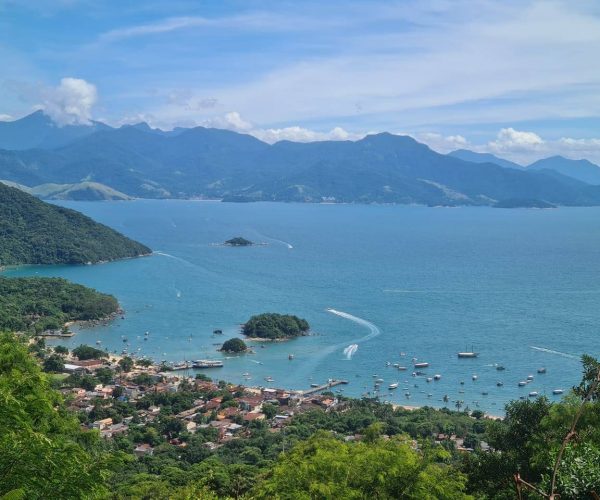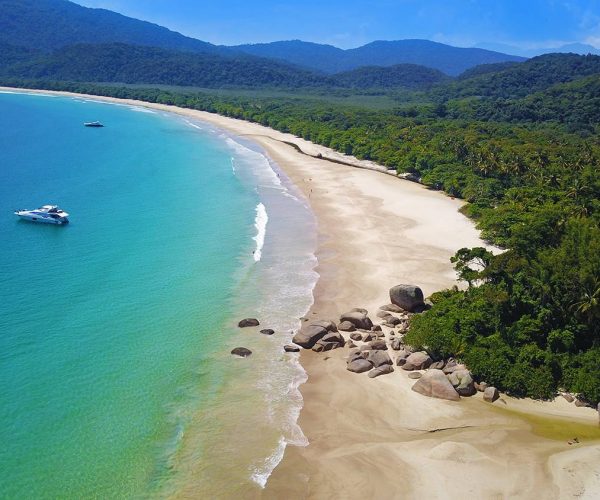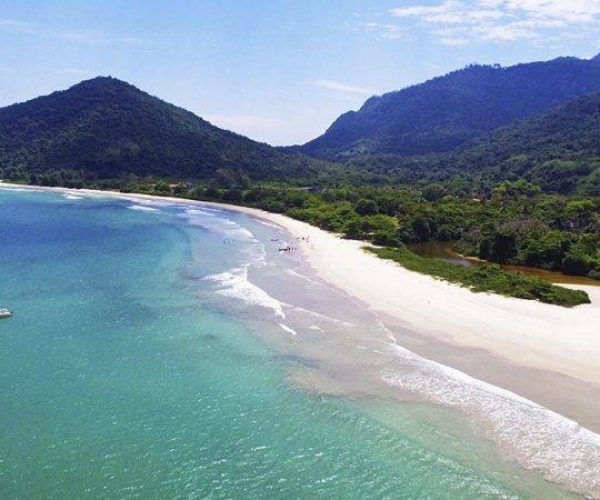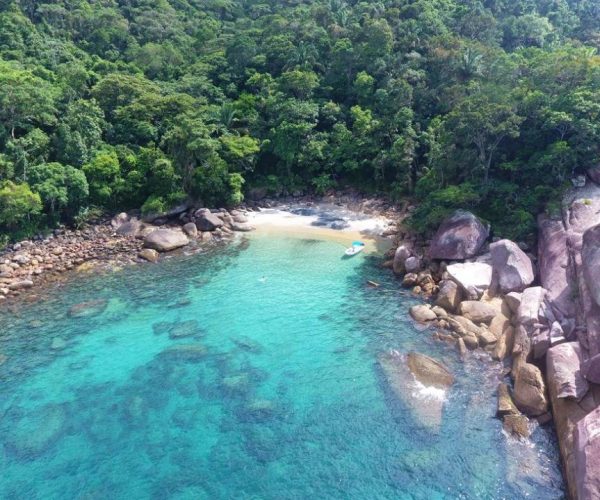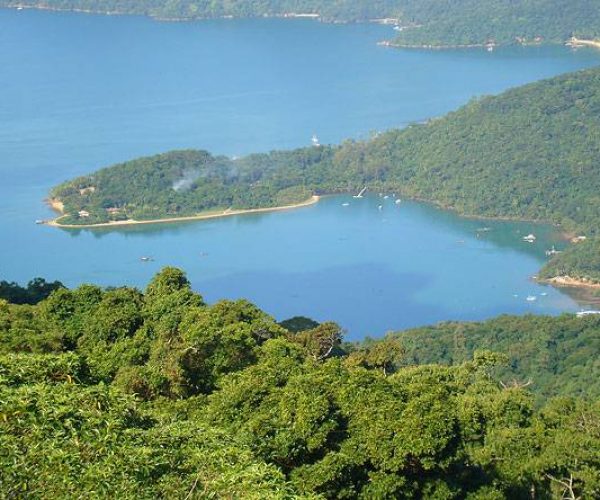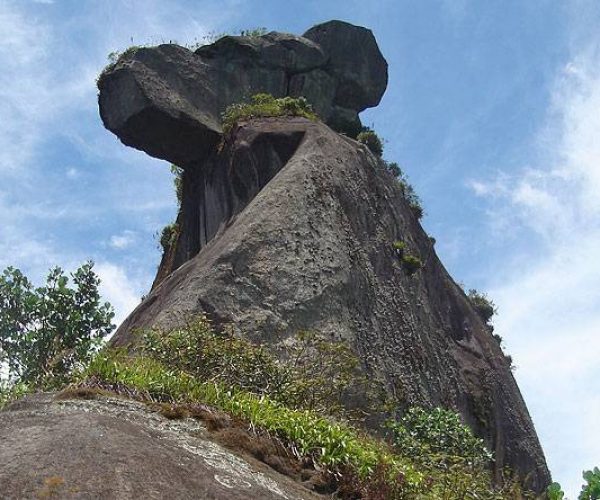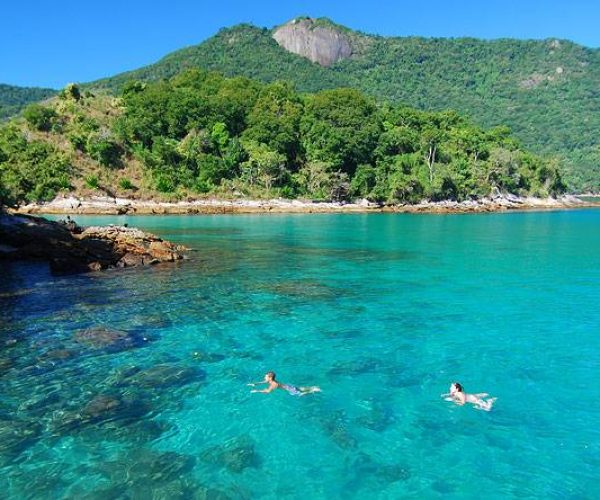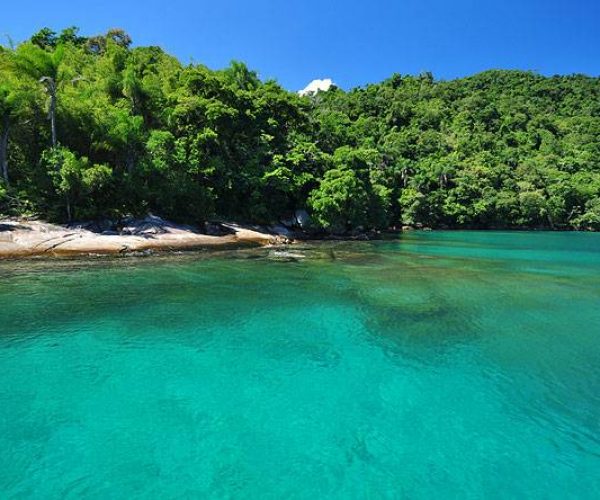Know more about
Ilha Grande ///
If you are into adventure in nature such as boating, rowing, hiking through the woods, cycling, or even using a mountain bike; scuba diving or floating, surfing, bathing in rivers and waterfalls, enjoying beaches with bars and rustic restaurants, then you’ll enjoy Ilha Grande.
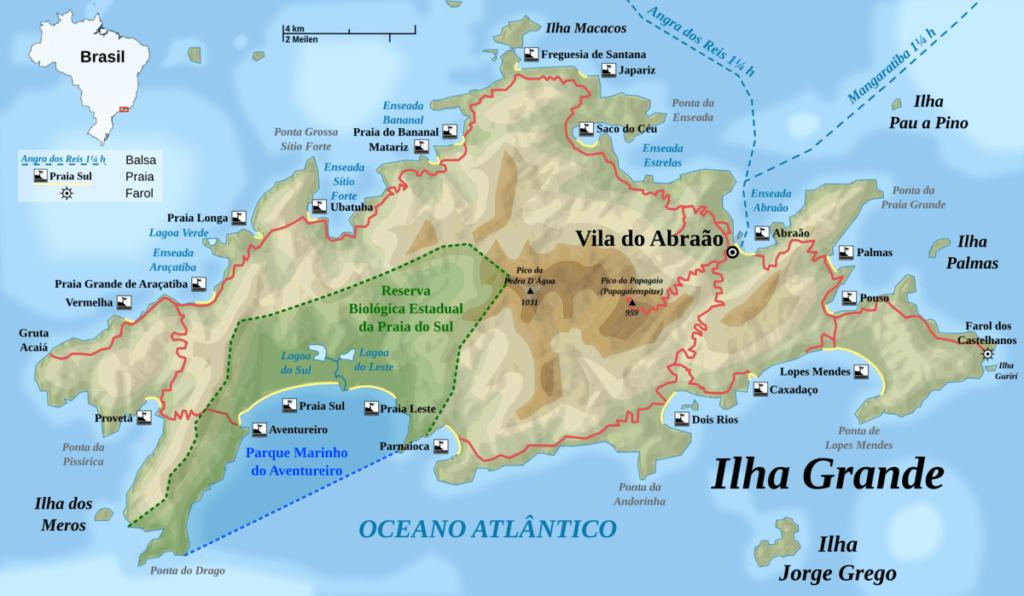
Ilha Grande is a little known paradise, situated in the south of Rio de Janeiro, on the “Costa Verde”. Tourism activity is relatively recent and has become the main economic activity in the region.
With its lush landscapes and 113 beaches of varying sizes and characteristics, Ilha Grande is a popular tourist destination for travelers from all over the world. Everyone falls in love with the preserved and unique nature of the region.
Forest-covered mountains, cascades and waterfalls, emerald ocean, white sand beaches and extensive area of preserved Atlantic forest, where cars are prohibited.
The history of Ilha Grande began after its discovery by the navigator Gonçalo Coelho on January 6, 1502. At that time it was inhabited by the Tamoios Indians who called it “Ipaum Guaçu”, an expression that means Ilha Grande.
Ilha Grande has been scenario of the history of Brazil since the time of its discovery and in 1803, the village obtains its first legal identity: “Freguesia de Santana da Ilha Grande de Fora”, becoming a famous outpost of the illegal slave trade until the abolition of slavery in 1888.
In the 19th century, D. Pedro II visiting Ilha Grande was enchanted by its beauty and tranquility and decided to acquire the “Fazenda do Holandês” (today Vila do Abraão) and “Fazenda de Dois Rios”. In Abraão, “Lazareto” was built, which served as a screening and quarantine center for sick passengers arriving in Brazil (more specifically in cases of cholera). The water to supply the Lazareto was diverted from a stream in Abraão, and for this reason, a dam and the Aqueduct were built, one of most historically important monuments in Ilha Grande. There is, even today, near the dam, the stone bench, called “Banco de D. Pedro”, used by the Emperor to rest.
In 1903 the Lazareto was disabled and the Correctional Colony of Dois Rios was created. In 1932 the Lazareto was demolished, but its ruins remain until today.
The fishing activity came to replace the decadent agriculture, in the beginning of the 30s of the 20th century, with fish salting. In the 50s, fishing reached its peak, when the number of “sardine factories” installed on Ilha Grande reached twenty.
In 1994, with the deactivation of the Ilha Grande prison, the development of tourism began, which has remained until then.
beaches ///
Abraão ///
Vila do Abraão is the main point of arrival for visitors to Ilha Grande. A charming place with a tropical climate and structure for those who want to know the region, where most of the restaurants, inns, mini markets, pharmacies, as well as traveling, transportation and diving agencies are found.
Lopes Mendes ///
One of the most beautiful beaches on the entire Brazilian coast, with approximately 3 km of fine white sand and crystal clear waters that display various shades of blue. The sea is almost always agitated by many waves, attracting many surfers and making it difficult for boats to dock, but with calmer waters it is possible to dock on the left side of the beach. The most used option by tourists to get to Lopes Mendes beach is to go by boat to Pouso beach and from there take a trail, which takes an average of 20 to 30 minutes. Many tourists who prefer to walk, choose to take the trail that starts at Praia do Abraão to Lopes Mendes, with an average duration of 2 hours. It's good to take snacks and mineral water since there is no commercial structure there.
Dois Rios ///
Dois Rios beach is 1 km long, with yellow sand and blue-green sea. It is recognized as one of the most beautiful places on Ilha Grande. The fresh water of the two rivers joins the salt water of the sea and forms the well-known Barra Grande and Barra Pequena. The rivers bathe an extensive mangrove, which balances the ecosystem of the entire region. It is in this mangrove that fish breed. It is suitable for the practice of surfing and fishing, as it faces the open sea, the region is well served with quality fish. The best way to visit Dois Rios is to follow the road that starts at Vila do Abraão and walk for approximately 7 km. It is recommended to go early so you don't stay until late at night in Dois Rios, as overnight stays are not allowed. There are no places to camp, no inns or houses for people to sleep.
Caxadaço ///
A nice cove with fifteen meters of beach, calm sea and clear waters with fish of several species, colorful birds, surrounded by the Atlantic Forest and a small stream flowing into the side of the beach. It is a hidden treasure on Ilha Grande, a place of unmistakable beauty. A huge rock at the entrance of Caxadaço Cove shelters the beach from waves, making it the ideal place for diving and bathing in the sea. Access can be done by boat, depending on the sea conditions, or by a trail departing from Abraão which lasts approximately 7 hours (round trip).
OTHER ATTRACTIVE PLACES ///
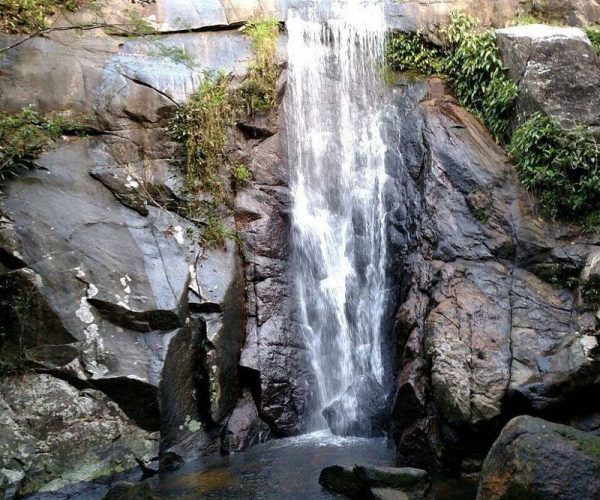
Cachoeira da Feiticeira (“Feiticeira” waterfall) ///
A Cachoeira da Feiticeira is among the favorite tours for those who want to hike in Ilha Grande. The waterfall, with approximately 13m in height, forms a natural pool with crystal clear water to cool off after the walk. Access to the waterfall can be done through a medium-course trail, which leaves Vila do Abraão and lasts an average of 3 hours round trip; or you can arrive by boat at Praia da Feiticeira and from there, take a 30-minute walk to the waterfall. It is also possible to walk from the village of Abraão to the waterfall and return by boat located at Praia da Feiticeira. Just be careful not to extend your stay at the waterfall and lose your boat.
Saco do Céu ///
Saco do Céu is a cove, with beautiful beaches and a mangrove swamp, formed within the Enseada das Estrelas. It is an ecological sanctuary rich in biodiversity. A curious fact is that more than half of the coast of Saco do Céu is formed by mangroves, a place of several marine species. Saco do Céu is also famous for its cuisine. Surrounded by traditional restaurants, it is considered one of the gastronomy points of Ilha Grande Bay. Stopping for lunch after a day of boating is quite common. Access to Saco do Céu can be by walking along the trail that leaves Vila do Abraão or by boat.
Pico do Papagaio ///
Pico do Papagaio with 982 meters of altitude is the second highest point of Ilha Grande, losing only to Pico da Pedra d'Água, with 1,035 meters. point of Ilha Grande, losing only to Pico da Pedra d'Água, with 1,035 meters. From its top we have a panoramic view of almost the entire Ilha Grande, from the mainland in Angra dos Reis to the Restinga da Marambaia. The trail to Pico do Papagaio is the most difficult in Ilha Grande, as it is in dense forest with steep land. There is no view of the sky. The land has soil variations with rocky parts and several trees crossing the trail. The route takes 8 hours (round trip) to complete and it is important to emphasize that to do this walk you need to hire an accredited guide. Many tourists choose to start the trail at dawn to watch the sunrise from above, which it is just out of this world!
Lagoa Azul ///
A set of islands form a protective barrier, creating a natural pool with crystal clear waters full of marine life. Lagoa Azul enchants everyone for the color of the water that makes the place one of the favorites of visitors for snorkelling or simply to enjoy a swim in the sea. The tour is one of the most common for those visiting Ilha Grande and it is part of the “Meia Volta a Ilha” tour.
Lagoa Verde ///
Lagoa Verde is a place of shallow, calm, typically green waters. The marine fauna surprises us, with several species of fish, corals, as well as starfish, seahorses and turtles. A wonderful view due to the shallow depth of its transparent and calm waters. It is possible to have an impressive visibility even in cloudy weather, which favors diving. Lagoa Verde is also part of the “Meia Volta à Ilha” tours and to access the Lagoa Verde departing from Abraão is only possible by boat.

